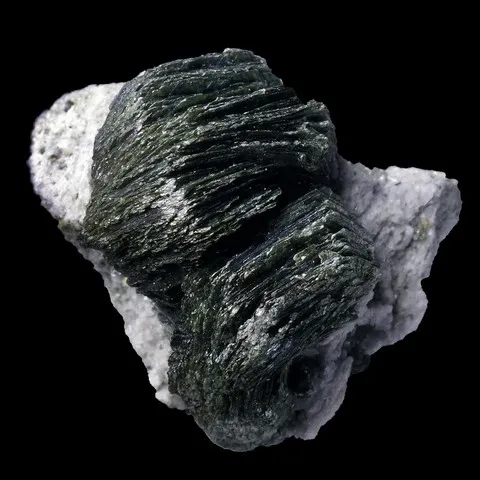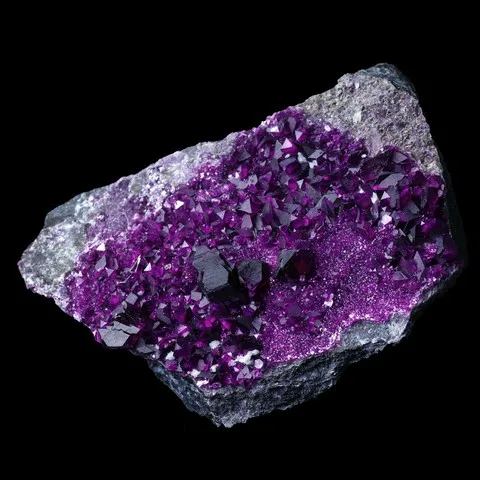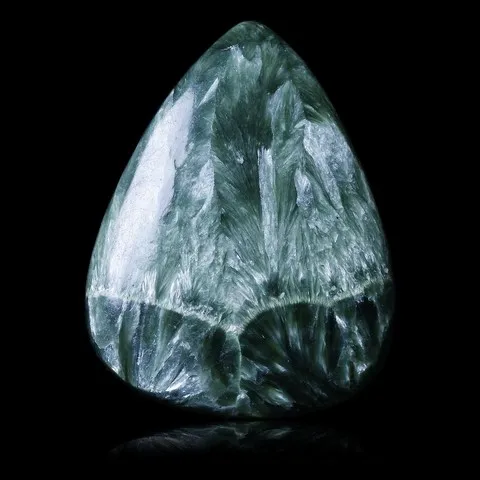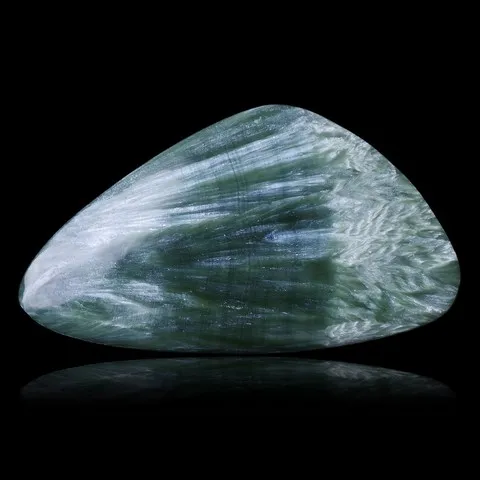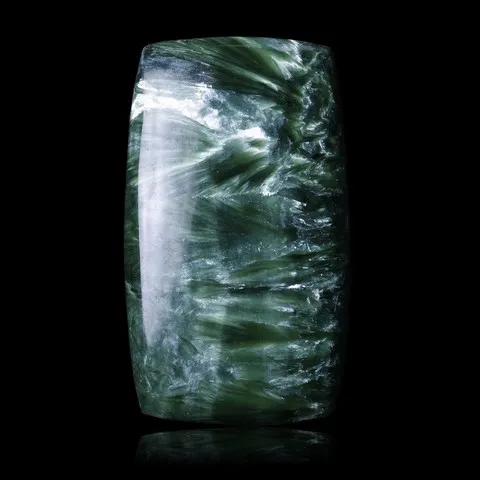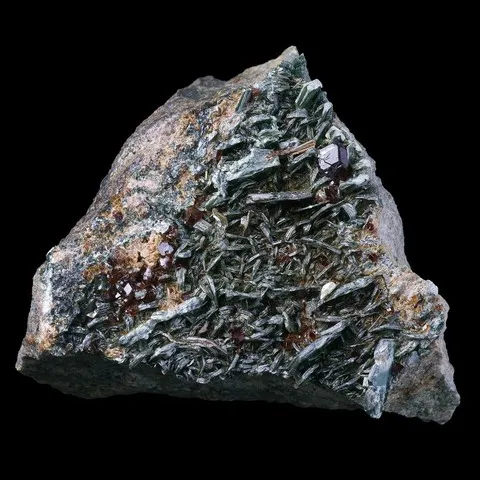CLINOCHLORE
Class : Silicates
Subclass : Phyllosilicates
Crystal system : Monoclinic
Chemistry : Mg5Al(Si3Al)O10(OH)8
Rarity : Very common
Clinochlore is one of the four main species of the group of chlorites, common phyllosilicates of magnesium, iron and aluminium. It is the magnesian term of the group, which constitutes a continuous series with the ferriferous term : chamosite. Its name comes from the Greek klino (to lean) and khlôros (green), due to its inclined optical axes and its green color. Clinochlore is the most frequent chlorite, common in low gradient metamorphic rocks (chlorite schists, zeolite facies), as well as in altered magmatic rocks (basalts, spilites, gabbros...),serpentinites, certaimarbles, and aureoles of alteration around hydrothermal deposits (so-called propylitic alteration). In these alteration contexts, clinochlore comes from the transformation of ferromagnesian minerals (biotite, amphibole, pyroxene). Like other chlorites, clinochlore occurs as squat, pseudohexagonal lamellar crystals, flattened on {001}, sometimes taking the appearance of barrels or acute rhombohedra with horizontally striated faces. Sector twins are not uncommon. It also occurs in leafy, vermicular, or scaly aggregates and in compact masses, finely crystalline to cryptocrystalline. The color is usually dark green to greenish black, exceptionally colorless, yellow or purplish red (kämmererite). Its varieties are numerous : pennine, ripidolite (finely crystallized variety), sheridanite, brunsvigite, all transition terms with ferriferous chamosite, and kämmerite.
Massive it is used in ornamentation under the trade name of seraphinite. Clinochlore, and more generally chlorites, have only a very marginal industrial use. Chlorite powder is sometimes used in decoration to enhance the shine of wallpaper.
Clinochlore in the World
Clinochlore in France
Clinochlor is present in good specimens in the alpine clefts of St-Christophe-en-Oisans (Isère) as well as at the Canari Mine (Corsica), It is found in aesthetic microcrystals in the talc quarries of Trimouns (Ariège).
Twinning
Sectorial twinning in common but impossible to identify with the naked eye.
Fakes and treatments
No fake inventories for this mineral species.
Hardness : 2 to 2.5
Density : 2.6
Fracture : Scaly
Trace : White to green
TP : Translucent to transparent
RI : 1.571 to 1.599
Birefringence : 0.005 to 0.011
Optical character : Biaxial +
Pleochroism : Visible
Fluorescence : None
Solubility : Sulfuric acid
Magnetism : None
Radioactivity : None

